The 9 Ramayana You Were Never Told About – Each One Reveals a Different Rama
Noopur Kumari | May 05, 2025, 13:00 IST
Ramayana
( Image credit : Times Life Bureau )
What if everything you thought you knew about Lord Rama was just one version of the truth? From ancient India to distant lands like Cambodia, Indonesia, and beyond, there are over 300 versions of the Ramayana—each telling a unique tale of Rama’s journey. In this article, explore 9 powerful Ramayanas that will change the way you see this revered figure forever. Get ready to dive deep into a world of hidden meanings and untold myths!
We frequently think there is only one Ramayana—the one our grandparents told us, the one we grew up seeing on TV every Sunday or listening to before bed. What if I told you, however, that there are more than 300 different versions of this old story? Each was influenced by its people, culture, and time. Rama was turned mortal by some. He was transformed into a celestial divinity by others. Some made Hanuman encounter a mermaid, while others made Sita brave and fearless! These are more than simply translations. These are changes. Tales that spread from India to Indonesia, Cambodia, Thailand, and even Japan, gaining fresh significance and enchantment in the process. Let's embark on an emotional trip through nine potent retellings of the Ramayana, some of which you will recognize and some of which will strike you by surprise.

Written in Tamil in the 12th century, Kambar's Ramavataram is a reimagining of Valmiki's Ramayana, not merely a translation. But Rama is more than just a prince of distinction here. He is God. The supernatural majesty of Kambar's depiction of Rama echoes the time in which he wrote, when Rama was already deified. In this rendition, Vaali does not remain silent as Rama murders him from behind a tree. He performs his defence through song. The reader is moved to tears by the emotion, the bhakti, and the rhythm. Even Sita's kidnapping is less brutal—Ravana carefully avoids touching her while lifting the ground she stands on. This rendition exudes poetic beauty, love, and dedication.

The story of the squirrel, one of the most endearing tales not found in Valmiki's epic, is told in this 14th-century Telugu adaptation by poet Ranganatha. A small squirrel rolls in the sand and shakes it off in an attempt to assist the Vanaras as they construct the bridge to Lanka. This small effort moves Rama, who massages its back, giving Indian squirrels their three stripes. It's a touching story that shows us that when the cause is right, no amount of assistance is too little. This rendition incorporates divine love with commonplace actions while reflecting the Telugu culture of the area.
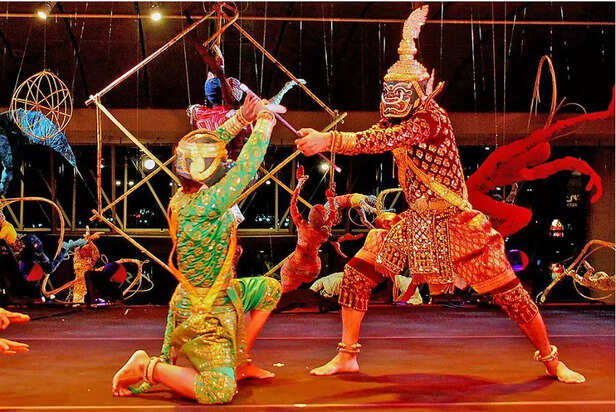
The national epic of Cambodia is The Reamker. However, it's about more than just Rama; it's about love, morality, and Buddhist knowledge. In this case, Ravana is Krong Reap while Sita is Neang Seda. The inclusion of additional characters, such as Sovanna Maccha, a mermaid who falls in love with Hanuman, is what makes it so beautiful! Ancient stone is transformed into the visual narrative by the Ramayana legends that adorn temples such as Angkor Wat. The Cambodians transformed the Ramayana into a dynamic work of art that is still pulsing with emotion today through dance, theatre, and mural.
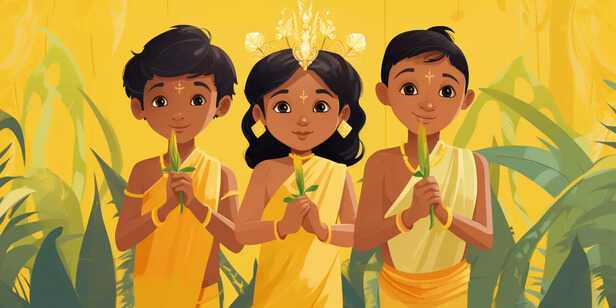
The Kakawin Ramayana is regarded as a poetic masterpiece in Indonesia. The surprise is that Semar, a supernatural guardian spirit, is added along with his three hilarious sons. The original Ramayana does not contain them. However, they are essential in Javanese puppet shows. It is Hanuman, not Sugriva, who is anointed king of the monkeys in this story. Yes, Rama is graceful, but the story is more about humor, balance, and cosmic play. It demonstrates how the Ramayana maintained its essential elements while assimilating thoroughly into Southeast Asia.

The Ramayana is known as the Ramakien in Thailand. It is performed in lavish dance dramas, painted on royal walls, and taught in schools. The story's profound influence on national identity is demonstrated by the fact that the Thai kings even adopted the title of Rama. With its golden clothes, graceful hand gestures, and solid moral foundation, Ramakien makes the story a visual spectacle. Here, Hanuman is not only a warrior but also humorous, endearing, and even flirty! The epic maintains its core of dharma while changing with Thai society.
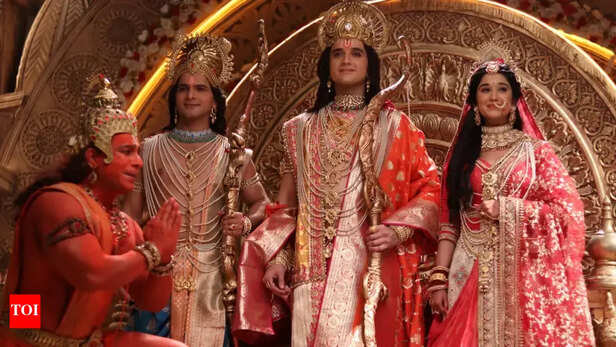
Lak Phra The focus is switched to Rama's devoted brother Lakshman (Phra Lak) by Phra Ram from Laos. Local ideas that value fraternal affection are reflected in this development. Lakshman's selflessness, silent power, and steadfast devotion server those we love, even if we don't receive credit for it—in contrast to the more divine depictions found elsewhere. A potent reminder that the story's core is carried by even the supporting casThe official ballet of the Burmese royal court in Myanmar is called Yama Zatdaw. It combines Buddhist principles with artistic flair and is based on Thai and Indian versions. More drama, more music, and a focus on reincarnation and karma are all present. It is a cultural memory rather than merely a recounting. It became the Burmese style of teaching duties, values, and the struggle between ego and humility, and it was passed down through the generations in song and dance.
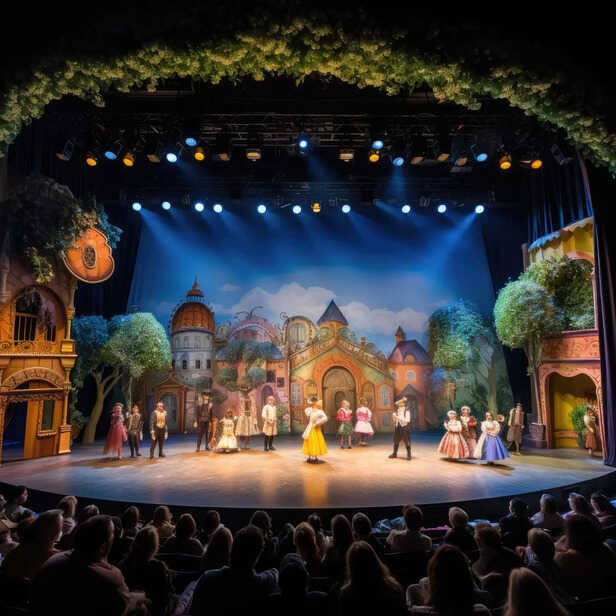
The 14th-century poet Madhava Kandali wrote the Saptakanda Ramayana in Eastern India. This Assamese version is unique because of its grounded tone. The gods are not far away or frightful; rather, they are friendly and occasionally even comical. This was one of the earliest regionally written Indian Ramayanas that the general public could understand. It informs us that everyone has spiritual insight, not just Sanskrit experts.
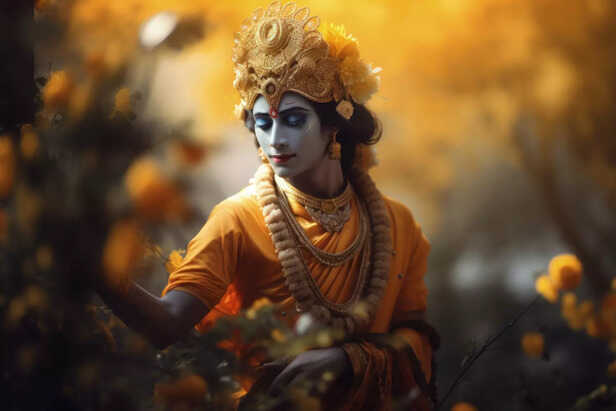
Last but not least is Tulsidas' 16th-century work, Ramcharitmanas. This is the Ramayana to millions of Indians. This devotional rendition, written in Awadhi, made the divine relatable. It is poetic, emotive, and the purest form of bhakti. In this rendition, Rama is Purushottam, Sita is Shakti, and each character reflects spiritual truth. Millions of people still recite this prayer every day, so it's more than simply a story.
So which version of Ramayana is the “real” one? All of them. And none of them. Because Rama is not just a prince. He’s a mirror. Every culture that embraced his story saw itself in him—and rewrote him accordingly. Some saw a god. Some saw a hero. Some saw a flawed man trying to do right. Some saw love, loss, valor, devotion, and sometimes, even rebellion. Like rivers flowing into the same ocean, these 300+ Ramayanas remind us that truth has many forms, and stories evolve with hearts that tell them. In every version, Rama still wins—but in every version, we learn something new about ourselves.
Explore the latest trends and tips in Health & Fitness, Travel, Life Hacks, Fashion & Beauty, and Relationships at Times Life!
1. The Tamil Treasure: Ramavataram by Kambar

Ramavataram
( Image credit : Freepik )
Written in Tamil in the 12th century, Kambar's Ramavataram is a reimagining of Valmiki's Ramayana, not merely a translation. But Rama is more than just a prince of distinction here. He is God. The supernatural majesty of Kambar's depiction of Rama echoes the time in which he wrote, when Rama was already deified. In this rendition, Vaali does not remain silent as Rama murders him from behind a tree. He performs his defence through song. The reader is moved to tears by the emotion, the bhakti, and the rhythm. Even Sita's kidnapping is less brutal—Ravana carefully avoids touching her while lifting the ground she stands on. This rendition exudes poetic beauty, love, and dedication.
2. The Squirrel's Blessing: Ranganatha Ramayana (Telugu)

Ranganatha.
( Image credit : Freepik )
The story of the squirrel, one of the most endearing tales not found in Valmiki's epic, is told in this 14th-century Telugu adaptation by poet Ranganatha. A small squirrel rolls in the sand and shakes it off in an attempt to assist the Vanaras as they construct the bridge to Lanka. This small effort moves Rama, who massages its back, giving Indian squirrels their three stripes. It's a touching story that shows us that when the cause is right, no amount of assistance is too little. This rendition incorporates divine love with commonplace actions while reflecting the Telugu culture of the area.
3. Cambodia’s Sacred Drama: Reamker

Cambodia_Reamker
( Image credit : Times Life Bureau )
The national epic of Cambodia is The Reamker. However, it's about more than just Rama; it's about love, morality, and Buddhist knowledge. In this case, Ravana is Krong Reap while Sita is Neang Seda. The inclusion of additional characters, such as Sovanna Maccha, a mermaid who falls in love with Hanuman, is what makes it so beautiful! Ancient stone is transformed into the visual narrative by the Ramayana legends that adorn temples such as Angkor Wat. The Cambodians transformed the Ramayana into a dynamic work of art that is still pulsing with emotion today through dance, theatre, and mural.
4. The Javanese Twist: Kakawin Ramayana

Kakawin Ramayana
( Image credit : Freepik )
The Kakawin Ramayana is regarded as a poetic masterpiece in Indonesia. The surprise is that Semar, a supernatural guardian spirit, is added along with his three hilarious sons. The original Ramayana does not contain them. However, they are essential in Javanese puppet shows. It is Hanuman, not Sugriva, who is anointed king of the monkeys in this story. Yes, Rama is graceful, but the story is more about humor, balance, and cosmic play. It demonstrates how the Ramayana maintained its essential elements while assimilating thoroughly into Southeast Asia.
5. Thailand’s Royal Ramayana: Ramakien

Ramakien in Thailand.
( Image credit : Freepik )
The Ramayana is known as the Ramakien in Thailand. It is performed in lavish dance dramas, painted on royal walls, and taught in schools. The story's profound influence on national identity is demonstrated by the fact that the Thai kings even adopted the title of Rama. With its golden clothes, graceful hand gestures, and solid moral foundation, Ramakien makes the story a visual spectacle. Here, Hanuman is not only a warrior but also humorous, endearing, and even flirty! The epic maintains its core of dharma while changing with Thai society.
6. Laos' Lakshman-Focused Tale: Phra Lak Phra Ram

Lakshman (Phra Lak)
( Image credit : Times Life Bureau )
Lak Phra The focus is switched to Rama's devoted brother Lakshman (Phra Lak) by Phra Ram from Laos. Local ideas that value fraternal affection are reflected in this development. Lakshman's selflessness, silent power, and steadfast devotion server those we love, even if we don't receive credit for it—in contrast to the more divine depictions found elsewhere. A potent reminder that the story's core is carried by even the supporting casThe official ballet of the Burmese royal court in Myanmar is called Yama Zatdaw. It combines Buddhist principles with artistic flair and is based on Thai and Indian versions. More drama, more music, and a focus on reincarnation and karma are all present. It is a cultural memory rather than merely a recounting. It became the Burmese style of teaching duties, values, and the struggle between ego and humility, and it was passed down through the generations in song and dance.
8. Assam’s Local Legacy: Saptakanda Ramayana

Kandali
( Image credit : Freepik )
The 14th-century poet Madhava Kandali wrote the Saptakanda Ramayana in Eastern India. This Assamese version is unique because of its grounded tone. The gods are not far away or frightful; rather, they are friendly and occasionally even comical. This was one of the earliest regionally written Indian Ramayanas that the general public could understand. It informs us that everyone has spiritual insight, not just Sanskrit experts.
9. The Bhakti Jewel: Ramcharitmanas by Tulsidas

Ramcharitmanas.
( Image credit : Freepik )
Last but not least is Tulsidas' 16th-century work, Ramcharitmanas. This is the Ramayana to millions of Indians. This devotional rendition, written in Awadhi, made the divine relatable. It is poetic, emotive, and the purest form of bhakti. In this rendition, Rama is Purushottam, Sita is Shakti, and each character reflects spiritual truth. Millions of people still recite this prayer every day, so it's more than simply a story.
One Rama, Endless Reflections
Explore the latest trends and tips in Health & Fitness, Travel, Life Hacks, Fashion & Beauty, and Relationships at Times Life!
